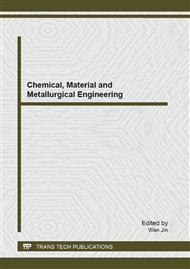p.35
p.40
p.45
p.49
p.53
p.58
p.62
p.68
p.72
Genes Expression of Key Enzymes in Phenylpropanes Metabolism Pathway in Cucumber with RT-PCR
Abstract:
Phenylpropanoid metabolism is an important secondary metabolism pathway in plants. Lignin, as a secondary metabolite was produced by secondary metabolism pathway, plays important roles on disease resistance in plants. PAL, C4H, and CHS are key enzymes involved in the secondary metabolism pathway and critical on disease resistance. We hypothesize that the expression of key enzymes of secondary metabolism pathway will be affected by abnormal environmental conditions; therefore provide the resistance to severe environment for plant. In this study, we analysed the gene expressions of PAL, C4H, and CHS under higher temperature and infection of germ (Pseudoperonosporacubensis) in Cucumber JingChun No.4, which is highly resistant to downy mildew. The gene expressions were quantified by semi-quantitative RT-PCR. Our results showed that the expression of C4H was consistently higher and not affected by germ inoculation. However, the expressions of PAL and CHS were increased at 2 h and 25 h, respectively, after inoculating with germs. Interestingly, we found that the expressions of all these three genes were decreased with treatment of higher temperature. Our results demonstrated that PAL, C4H and CSH are important in secondary metabolism and affect the potential resistant ability of plant to various severe growing environments.
Info:
Periodical:
Pages:
53-57
Citation:
Online since:
August 2013
Authors:
Price:
Сopyright:
© 2013 Trans Tech Publications Ltd. All Rights Reserved
Share:
Citation:


